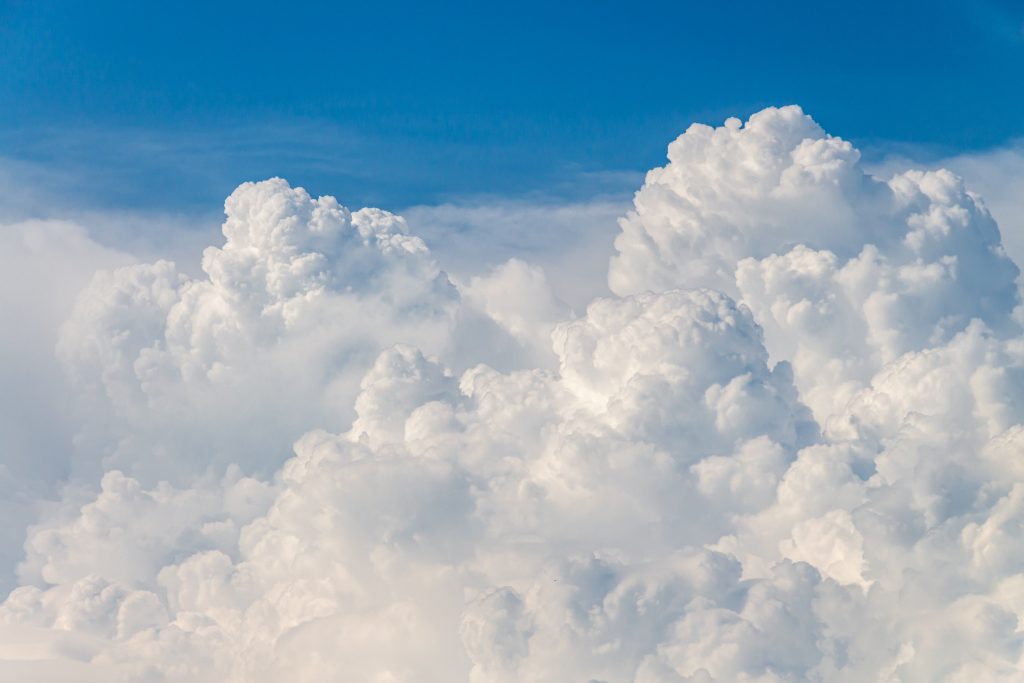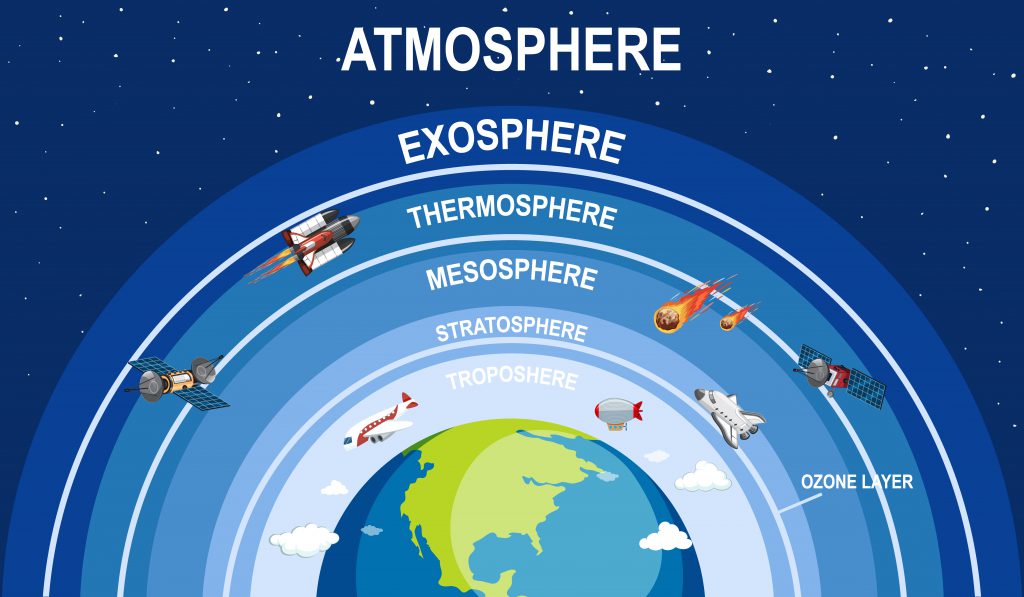
Air is what our planets’ atmosphere is made of.
*** *** ***
Air is a mixture of the 5 main gases: nitrogen, oxygen, water vapor, argon and carbon dioxide.
***
In the atmosphere there are different layers of air, whereof each layer has its own composition of known gases. The atmospheric layers are Troposphere, Stratosphere, Mesosphere, Thermosphere and Exosphere.

- Troposhere: Altitude from ground level to 10 km / 6,2 miles. Most of all weather happens in this layer, 99% of the water vapor in this layer. The higher you climb, the lower the air pressure and temperature.
- Stratosphere: Altitude from 10 km / 6,2 miles to 50 km (31 miles). The Ozone layer is within this zone, where ozone molecules absorb sun radiation (ultraviolet (UV) light) and convert the sun light into heat.The higher you climb, the warmer temperature.
- Mesosphere: Altitude from 50 km (31 miles) to 85 km (53 miles). Meteors burn up here. The higher you go, the lower the air pressure and temperature. Coldest temperature of all atmospheres near the layers top (around -90° C /-130° F). Air is to thin to breathe.
- Thermosphere: Altitude from 85 km (53 miles) to a range between 500 km and 1,000 km (311 to 621 miles). Absorbs high-energy X-rays and sun radiation, leading to extreme hot temperatures from 500° C (932° F) to 2,000° C (3,632° F) or higher in the upper layer. The higher you get, the hotter it will be. Aurora, the Northern & Southern lights happen in this layers. Extremely thin air and close to outer space. Altitude above 85 km is changing as it depends on the amount of incoming sun energy. Even Satellites can be found here.
- Exosphere: Altitude is starting after the Thermosphere up to estimated 100,000 km (62,000 miles) to190,000 km (120,000 miles). Border line to the outer space, the extremly thin air and gradually leaking into the open space.
- Ionosphere: Not a layer itself, but areas within the Mesosphere and Thermosphere, where ions accumulate due to the splitting of electroms from atoms and molecules due to high energy sun radation.
If the composition of gases changes, the climate changes. So the big threat to the air is the air pollution through carbon dioxide (CO2) emissions. And latest since the industrialization age, this increasing air pollution is made by the humans.
Learn about air pollution and find out how to help the air!